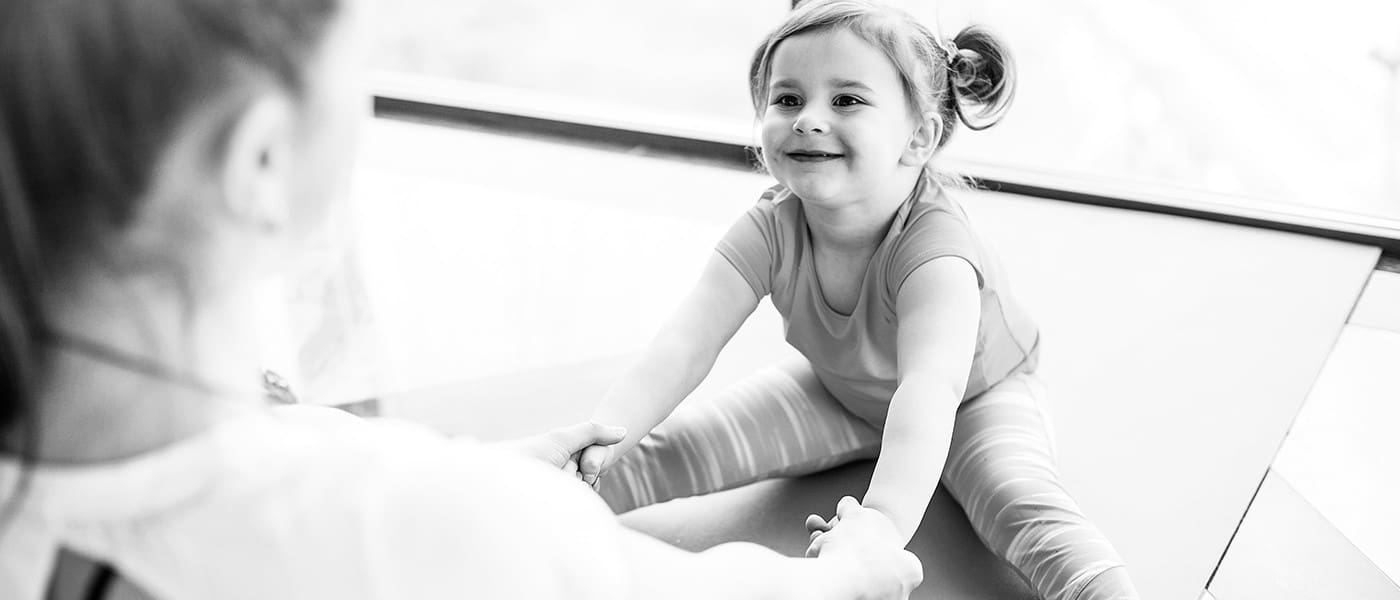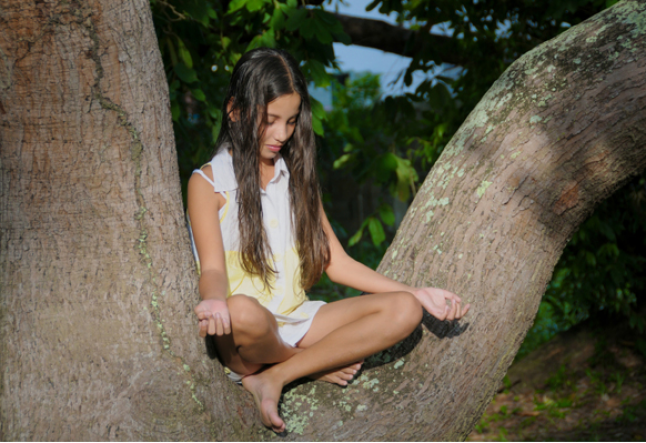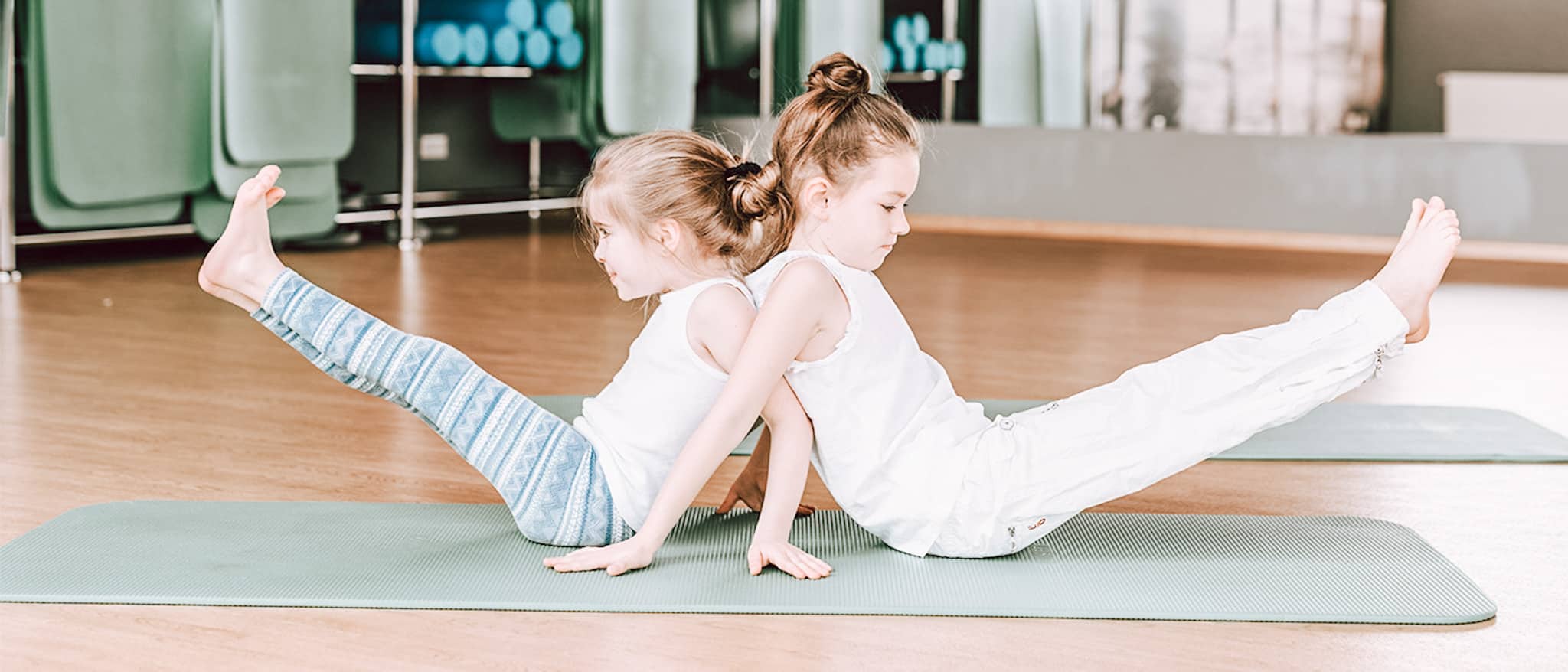yoga for kids

how old, how often, how long, should children practice yoga?
You are your child’s first yoga teacher. Regardless of your fitness level, you and your child can practice and learn about yoga together. Sharing yoga encourages community, connection, compassion and communication in families.
These days, the non-competitive spirit of yoga is a welcome reprieve from peer and performance pressures.
At What Age is Yoga For Children Appropriate?
Children can begin as early as age three or four. Little ones respond best when yoga is presented as play. Postures that require balance, strength and coordination may be challenging. The support you give your child instills trust, confidence and self-esteem.
How Often is it Appropriate to Practice Yoga For Children?
Family yoga time is a special time for you and your child. Find a day and time, and be consistent. Ritual, routine and discipline are an important part of any yoga practice, especially yoga for kids. It is through regular practice that you will find the greatest physical, physiological and emotional benefits, and where children will benefit from the consistency and structure.
How long is it Appropriate to Practice Yoga for Children?
Practice for as long as your child is engaged. Wrap up your session when your child tires or loses interest. If you or your child have any physical limitations, consult a yoga instructor before beginning the following practice. Adaptations and modifications may be made.
Try this sequence:
Learning to Listen
Sit with your legs crossed. Use a pillow or folded blanket if it will help you sit up tall. Your child may sit in your lap or in front of you. Close your eyes and open your ears. Ask your child to listen to the sound of her breath. Ask her to describe her breath: Is it long or short? Deep or shallow? Soft or loud? Have her place her hands on her ribcage.
Ask her what happens when she breathes in and out. Next, reach around to your spine and ask her what happens when she inhales and exhales. Arm movements are introduced to stretch the torso and mobilize the rib cage. Reach your arms out to the sides and up, circling your body.
Tell your child that you are surrounding yourself with sunshine. You are light and bright like the sun. Repeat three or four times.
Cat Stretch
Begin on all fours with your hands under your shoulders and knees under your hips. As you exhale, sit back on your heels, belly to thighs, and forehead to the floor; on inhale return to all fours. Move with your breath. Have your child meow like a cat as she sits back. This will cultivate her awareness of the relationship between breath and movement. Repeat four to six times.
Child’s Pose
Rest on your heels for a few breaths.
Cobra Pose
Cobra Snakes do not have arms or legs, so bring your legs together and your arms to your sides. On inhalation, lift your chest; on exhalation, lower to the floor. Ask your child to hiss like a snake as she exhales. Practice moving in and out of the pose three or four times, then hold the pose for three to five breaths. Notice the quality of your breath as you hold the pose. If it becomes short and shallow, rest. Ask your child if her breath is long, deep and soft.
Downward Facing Dog
From all fours, exhale and straighten your legs; on your inhalation bring your knees to the floor. On exhale, bark, woof or howl. Repeat three to four times. If you are comfortable holding downward facing dog, have your child slither like a snake or walk like a little dog under you. She may also walk her feet up the back of your legs into a half handstand.
Child’s Pose/ Partner Tree
Rest once again in child’s pose. Ask your child to listen to and describe her breath again. Are there any changes? You are now a little seed. What kind of tree will grow into? Begin to grow. Standing tall and side-by-side, wiggle your toes and reach them deep into the earth, like the roots of a tree. Lift your outside foot and place it below or maybe above your knee. Bring your inside arms around each other and the palms of your outside hands together. Repeat other side. Try with your eyes closed or on your tippy-toes.
Boat
Sit face-to-face and toe-to-toe. Hold each other’s hands. Sit up tall. Lift your feet and bring the soles together. Straighten your legs. Where will your sails take you?
Supported Bridge
It’s important to stretch your belly after contracting your abdominal muscles. Rest once again in child’s pose and ask your child to have a seat; sit with your buttocks touching. Ask your child to lean back and lie down on your back. If she can reach her arms overhead, hold her wrists. Rest for five breaths. Do it again if you’d like.
Sitting Twist
Sit face to face with your legs crossed; your knees touching. Wrap your right arms behind you. Reach your left arms across your front. Hold each other’s right hand with your left. On inhalation sit up tall, gently unwind a bit and look into each other’s eyes. On exhalation, twist and look behind you. Repeat two more times, then hold in the exhale position for three to five breaths. Repeat the other side.
Rest
Lie on your back and bring your knees to your chest. Wrap your arms around your shins and give yourself a squeeze; hold for a few breaths.
Then, bring your feet to the floor and stretch your legs out. Lie with your feet just wider than hip distance, and your arms by your sides palms facing up.
Ask your child to lie belly down on top of you (Your child may also lie by your side.) You may wrap your arms around your child. Close your eyes and open your ears. Ask your child if she can hear the sound of your beating heart and the rhythm of your breath. Ask her to describe it.
Lie still and quiet for several minutes. When you feel rested and refreshed stretch your arms over head. Roll to one side and curl up. Slowly sit up.
To end
Bring your palms together, bow your heads and say thank you and namaste.
Darlene D’Arezzo is founder and director of Kids’ Yoga Circle. kidsyogacircle.com



